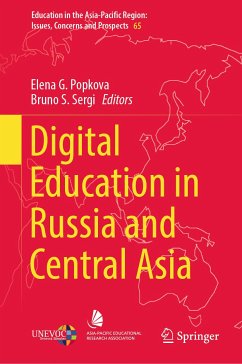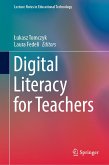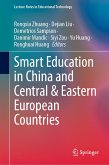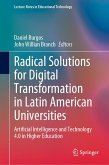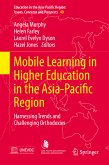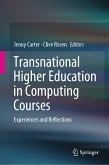Digital Education in Russia and Central Asia (eBook, PDF)
Redaktion: Popkova, Elena G.; Sergi, Bruno S.


Alle Infos zum eBook verschenken

Digital Education in Russia and Central Asia (eBook, PDF)
Redaktion: Popkova, Elena G.; Sergi, Bruno S.
- Format: PDF
- Merkliste
- Auf die Merkliste
- Bewerten Bewerten
- Teilen
- Produkt teilen
- Produkterinnerung
- Produkterinnerung

Hier können Sie sich einloggen

Bitte loggen Sie sich zunächst in Ihr Kundenkonto ein oder registrieren Sie sich bei bücher.de, um das eBook-Abo tolino select nutzen zu können.
This book is a collection of the leading scientific studies, which elaborate on the unique specifics of Central Asia and Russia and dwell on the potential and current contribution of digital higher education to the preservation of these specifics and adaptation of universities to them. In the four parts of this book, the authors determine the contribution of digital education to cultural inclusivity and the development of international education in Central Asia and Russia. The role of digital higher education in the sustainable development of regions in Central Asia and Russia is described.…mehr
- Geräte: PC
- ohne Kopierschutz
- eBook Hilfe
- Größe: 6.52MB
![Digital Literacy for Teachers (eBook, PDF) Digital Literacy for Teachers (eBook, PDF)]() Digital Literacy for Teachers (eBook, PDF)137,95 €
Digital Literacy for Teachers (eBook, PDF)137,95 €![Smart Education in China and Central & Eastern European Countries (eBook, PDF) Smart Education in China and Central & Eastern European Countries (eBook, PDF)]() Smart Education in China and Central & Eastern European Countries (eBook, PDF)97,95 €
Smart Education in China and Central & Eastern European Countries (eBook, PDF)97,95 €![Radical Solutions for Digital Transformation in Latin American Universities (eBook, PDF) Radical Solutions for Digital Transformation in Latin American Universities (eBook, PDF)]() Radical Solutions for Digital Transformation in Latin American Universities (eBook, PDF)105,95 €
Radical Solutions for Digital Transformation in Latin American Universities (eBook, PDF)105,95 €![Mobile Learning in Higher Education in the Asia-Pacific Region (eBook, PDF) Mobile Learning in Higher Education in the Asia-Pacific Region (eBook, PDF)]() Mobile Learning in Higher Education in the Asia-Pacific Region (eBook, PDF)113,95 €
Mobile Learning in Higher Education in the Asia-Pacific Region (eBook, PDF)113,95 €![Digital Transformation in Higher Education. Empowering Teachers and Students for Tomorrow's Challenges (eBook, PDF) Digital Transformation in Higher Education. Empowering Teachers and Students for Tomorrow's Challenges (eBook, PDF)]() Digital Transformation in Higher Education. Empowering Teachers and Students for Tomorrow's Challenges (eBook, PDF)89,95 €
Digital Transformation in Higher Education. Empowering Teachers and Students for Tomorrow's Challenges (eBook, PDF)89,95 €![Community Engagement 2.0?: Dialogues on the Future of the Civic in the Disrupted University (eBook, PDF) Community Engagement 2.0?: Dialogues on the Future of the Civic in the Disrupted University (eBook, PDF)]() Scott L. CrabillCommunity Engagement 2.0?: Dialogues on the Future of the Civic in the Disrupted University (eBook, PDF)40,95 €
Scott L. CrabillCommunity Engagement 2.0?: Dialogues on the Future of the Civic in the Disrupted University (eBook, PDF)40,95 €![Transnational Higher Education in Computing Courses (eBook, PDF) Transnational Higher Education in Computing Courses (eBook, PDF)]() Transnational Higher Education in Computing Courses (eBook, PDF)69,95 €
Transnational Higher Education in Computing Courses (eBook, PDF)69,95 €-
-
-
Dieser Download kann aus rechtlichen Gründen nur mit Rechnungsadresse in A, B, BG, CY, CZ, D, DK, EW, E, FIN, F, GR, HR, H, IRL, I, LT, L, LR, M, NL, PL, P, R, S, SLO, SK ausgeliefert werden.
- Produktdetails
- Verlag: Springer Nature Singapore
- Seitenzahl: 424
- Erscheinungstermin: 3. Mai 2022
- Englisch
- ISBN-13: 9789811690693
- Artikelnr.: 63957814
- Verlag: Springer Nature Singapore
- Seitenzahl: 424
- Erscheinungstermin: 3. Mai 2022
- Englisch
- ISBN-13: 9789811690693
- Artikelnr.: 63957814
- Herstellerkennzeichnung Die Herstellerinformationen sind derzeit nicht verfügbar.
Es gelten unsere Allgemeinen Geschäftsbedingungen: www.buecher.de/agb
Impressum
www.buecher.de ist ein Internetauftritt der buecher.de internetstores GmbH
Geschäftsführung: Monica Sawhney | Roland Kölbl | Günter Hilger
Sitz der Gesellschaft: Batheyer Straße 115 - 117, 58099 Hagen
Postanschrift: Bürgermeister-Wegele-Str. 12, 86167 Augsburg
Amtsgericht Hagen HRB 13257
Steuernummer: 321/5800/1497
USt-IdNr: DE450055826
Bitte wählen Sie Ihr Anliegen aus.
Rechnungen
Retourenschein anfordern
Bestellstatus
Storno
Sollte Ihr Anliegen nicht dabei sein, finden Sie weitere Auskünfte zu Ihren Fragen auf unseren Serviceseiten.
Serviceseiten
Schließen
